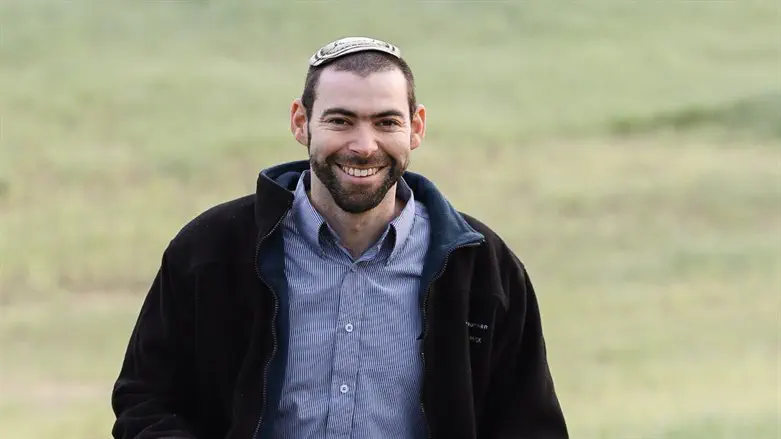
Taharat HaMetzorah – The Story of Am Yisrael
It’s not easy to understand all the details of the purification process of the metzorah — the person afflicted with tzaraat (which is a spiritual disorder)— described in this week’s parsha. The bundle of ezov (hyssop), the two identical birds, the slaughtering of one, the use of mayim chayim (spring water), dipping the live bird into the blood, sprinkling the mixture on the metzorah, and then setting the bird free — these are all chukim, mitzvot that go beyond human understanding.
However, there seems to be something deeper here. We can look at this mysterious process as a kind of symbolic pattern — one that parallels the greater journey of the Jewish people.
The entire purification of the metzorah may serve as a parable to two of the most important phases in our national story — the birth of Am Yisrael in the Exodus from Egypt, and the future rebirth of Am Yisrael in the final redemption.
The Birth of a Nation – Like the Purification of the Metzorah
Let’s begin with the past — the moment Am Yisrael was born as a nation, during the Exodus from Egypt. On Pesach, we find details that echo the metzorah’s purification process:
"ולקחתם אגודת אזוב וטבלתם בדם אשר בסף" (שמות יב, כב)
“And you shall take a bundle of hyssop, and dip it in the blood that is in the basin…” (Exodus 12:22)
The Ramban (Vayikra:14) points out the connection between the metzora and the Exodus:
"...והנה המצורע ותורת הבית המנוגע וטומאת המת קרובים והנה הם כדמות פסח מצרים"
“The laws of the metzora, the afflicted house, and corpse impurity are similar — and they resemble the Pesach in Egypt.”
This suggests that the metzora’s process is not just about healing — it’s about rebirth.
In both stories, we find striking parallels:
The metzora shaves off all his hair. In Egypt, Am Yisrael is described as spiritually naked, “Erom Veerya” like a newborn child (Yechezkel 16).
Both involve hyssop and blood. And in every birth there is blood as well
“And I said to you, in your blood — live” (Yechezkel 16:6).
The mayim chayim — living water — represents the fresh start and divine influence entering the world.
The two identical birds may represent how Am Yisrael and the Egyptians were once indistinguishable. In the end, one bird is slaughtered — symbolic of the death of Egypt’s firstborn — and the other bird is set free, just as Am Yisrael was freed in the Exodus.
The Final Redemption – Like the Purification of the Metzorah
Now let’s look to the future — the geulah, the rebirth of our nation.
The prophet Yechezkel (chapter 36) describes the return from exile, the in-gathering of exiles, and the spiritual rebirth of Am Yisrael. There, we find imagery very similar to that of the metzora:
"וזרקתי עליכם מים טהורים וטהרתם" (יחזקאל לו, כה)
“And I will sprinkle pure water upon you, and you shall be purified…” (Ezekiel 36:25)
The Ohr HaChayim (Vayikra 14) explains, that the entire purification process of the metzora hints at the end of exile:
Tzaraat symbolizes the suffering and oppression of exile.
Returning to the camp parallels returning from exile to Eretz Yisrael.
The Kohen represents Hashem, who after teshuvah (the healing), purifies us.
The two birds symbolize the two Mashiachs — Mashiach ben Yosef, who dies, and Mashiach ben David, who completes the redemption.
We can add that perhaps in exile, Am Yisrael is like the metzora, who is compared to someone who is dead. But in the redemption, we go through a kind of techiyat hameitim — resurrection. This is seen clearly in Yechezkel’s vision of the dry bones (chapter 37).
And in the end, just like the free bird that is sent away — a tzipor dror, a bird that doesn’t accept mastery — we too return to our land as a free people.
As we say in Hatikvah: "lehiyot Am Chofshi Beartzeinu"- “To be a free people in our land”,
And the pasuk is fulfilled, "Dror"- Liberty:
"וקראתם דרור בארץ לכל ישביה" (ויקרא כה, י)
“You shall proclaim liberty throughout the land to all its inhabitants” (Leviticus 25:10)
The purification of the metzora isn’t just a strange ritual. It’s a deep process that reflects the whole story of Am Yisrael.
From the very beginning — our birth as a nation in Egypt.
Through the long exile, pain, and wandering.
And finally, to the geulah — our future redemption and national rebirth.
Just like the metzora who heals, comes back home, and finds joy in life again — so too, Am Yisrael will return to its land, renewed in spirit, and full of life once more.